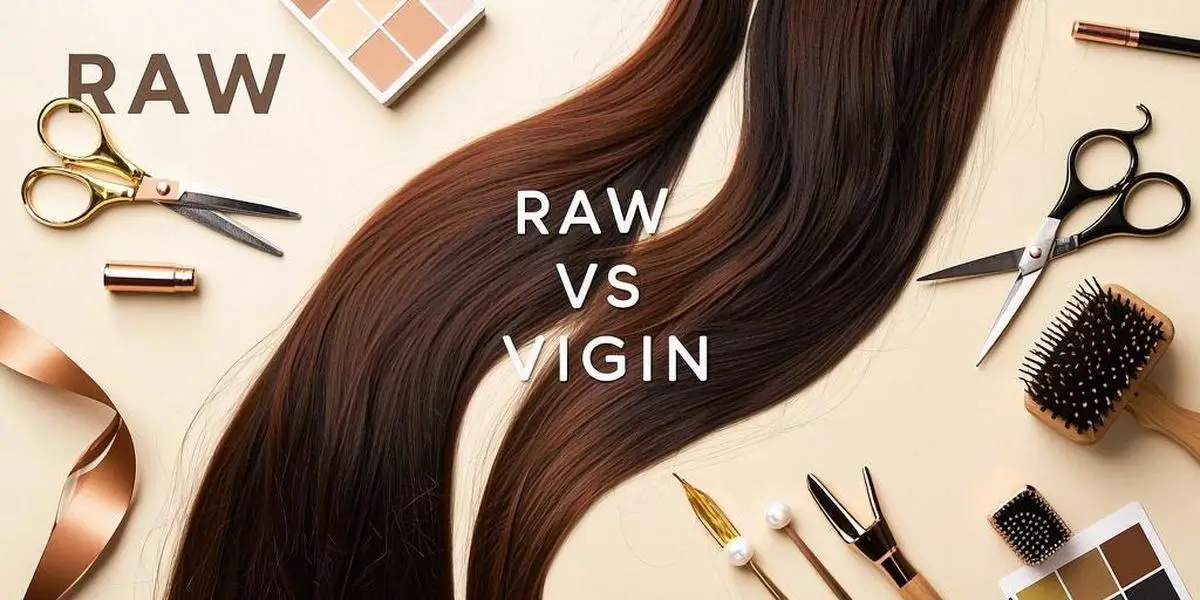Raw Hair vs Virgin Hair: Key Differences Every New Stylist Must Know

We often encounter confusion in the beauty industry regarding the terms "raw hair" and "virgin hair." Both types of hair are crucial for hairstylists, salon owners, and beauty supply retailers, yet they offer distinct features and benefits that cater to different needs. In this blog post, we'll delve into the key differences between raw hair and virgin hair, highlighting their unique characteristics and the processing technologies involved. By understanding these differences, you can make informed decisions that will enhance your offerings and meet your clients' demands.
Understanding Raw Hair
Raw hair refers to unprocessed hair that has been collected from donors without any chemical treatments or alterations. This hair is sourced directly from individuals and is typically collected in its natural state, which means it retains its original texture, color, and cuticle alignment. One of the standout features of raw hair is its versatility; it can be dyed, styled, and manipulated to achieve various looks.
Processing Technology: The technology used in processing raw hair is essential. Although raw hair remains unprocessed, it undergoes rigorous cleansing and sorting to ensure that only the highest quality strands are used. This meticulous approach preserves the integrity of the hair, making it an excellent choice for high-end applications.
Exploring Virgin Hair
Virgin hair, on the other hand, is hair that has not been chemically altered or processed in any way. What sets virgin hair apart is that it is typically sourced from a single donor, ensuring a consistent texture and quality throughout. This makes it a favorite among stylists and clients who desire a natural look and feel.
Source of Raw Materials: The source of virgin hair is crucial. Since it comes from a single donor, the hair maintains its natural cuticle direction and health, resulting in a more luxurious appearance. This quality makes virgin hair ideal for those looking for extensions or wigs that blend seamlessly with their natural hair.
Key Differences Between Raw Hair and Virgin Hair
Processing and Purity:
- Raw Hair: Unprocessed, but may be collected from multiple donors. Its purity comes from minimal handling and processing.
- Virgin Hair: Always from a single donor, ensuring uniformity and a higher level of purity.
Texture and Versatility:
- Raw Hair: Available in various textures and can be styled to match different looks. Ideal for creative projects.
- Virgin Hair: Typically offers a consistent texture, making it easier to work with for clients who prefer a natural appearance.
Cost and Value:
- Raw Hair: Often more affordable due to its availability and the nature of sourcing.
- Virgin Hair: Generally priced higher because of its single-donor sourcing and superior quality.
Durability:
- Both raw and virgin hair can last for a long time, but the durability largely depends on the care and maintenance provided by the stylist and the client.
Conclusion
In conclusion, understanding the differences between raw hair and virgin hair is essential for new stylists, wholesalers, salon owners, and beauty supply retailers. Each type of hair has its own unique features and benefits, making it crucial to select the right option based on client needs and preferences. By offering both raw and virgin hair products, you can cater to a broader clientele while enhancing your business's reputation for quality and reliability in the beauty industry.
Whether you’re looking to stock your salon with the best hair products or seeking top-notch supplies for your beauty store, understanding these distinctions will empower you to make informed choices that will ultimately delight your clients and elevate your brand.

Leave a Comment